Crown Shyness and Two Other Natural Phenomena Worth Traveling the World to Find
Crown shyness, the Red Crab migration, and the aurora borealis are all worth seeing in person. What are these natural phenomena exactly, and where can they be seen? Time to find out.
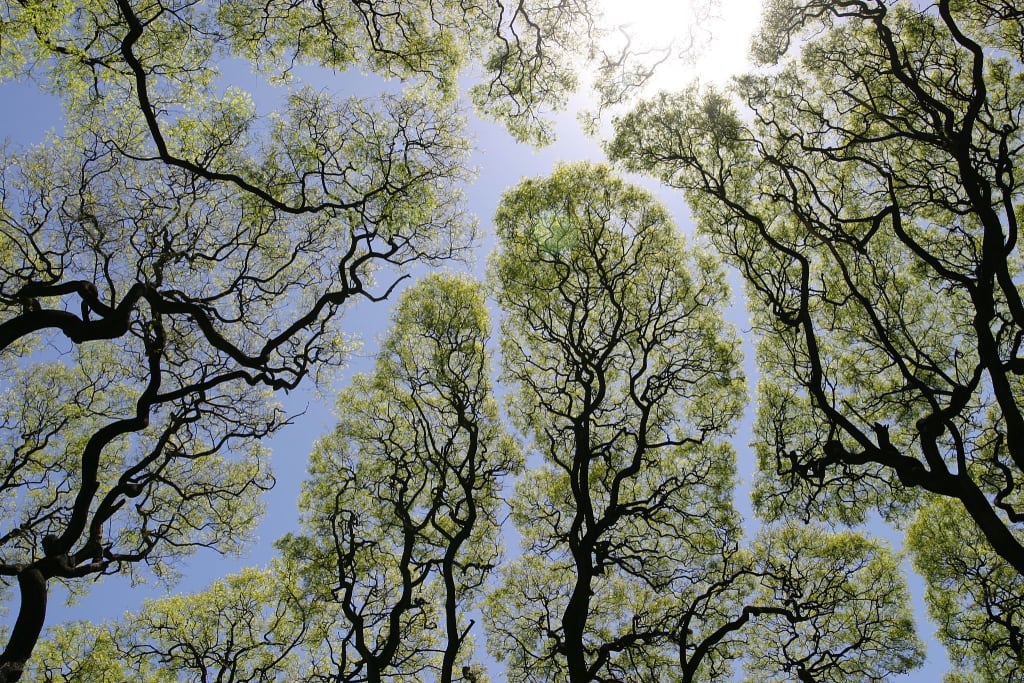
Do you look up when you walk through a forest? If not, perhaps you are missing out on seeing one of nature's most curious phenomena: "crown shyness." "Crown shyness" is when the upper branches, leaves, and extended reproductive structures of a tree, known as the tree's crown, avoid overlap, intersect, or any other form of touching. With tree crowns avoiding contact with each other, the name "crown shyness" makes a lot of sense.
Since the first documentations of this phenomena in the 1920s, scientists have fallen into a perpetual loop of debate for why trees behave in this manner. One theory suggests "crown shyness" as a defence tactic that prevents the spread and contamination of leaf-eating insects. As the channels between tree crowns grow, leaf-eating insects such as beetles, grasshoppers, cicadas, and aphids lose the ability to travel from tree to tree. Another theory assumes "crown shyness" assists the process of photosynthesis. Tree leaves feel when they approach other tree's and stop growth, allowing for light to breach through the tree's canopy and let photosynthesis progress, according to this theory. The most widely accepted theory is that "crown shyness" is done so that trees avoid injury. This phenomena is most prominent in windy locations, making scientists assume that "crown shyness" is done to avoid branches from colliding and intertwining with each other and possibly breaking off.
If you have interest in seeing "crown shyness" for yourself, perhaps travel to a windy country such as Gabon or Indonesia to see trees that practice "crown shyness." Look for the tree, Avicennagerminans — also known as the Black Mangrove — in Gabon or a Dryobalanops lanceolata in Indonesia.
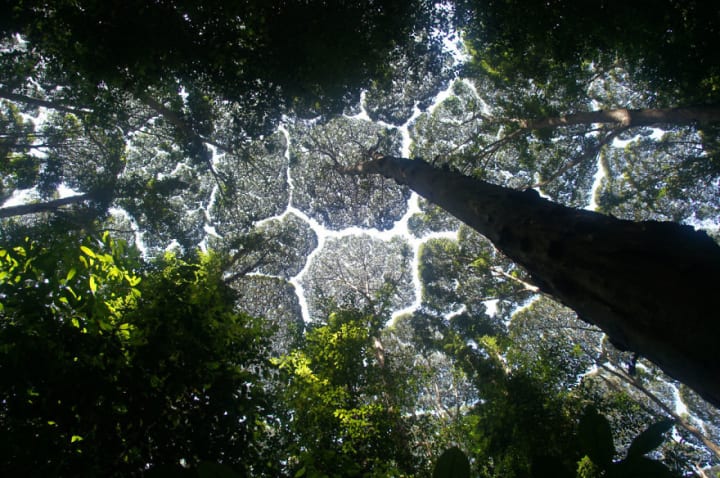
Credit: (johdahn)
The Red Crab Migration on Christmas Island
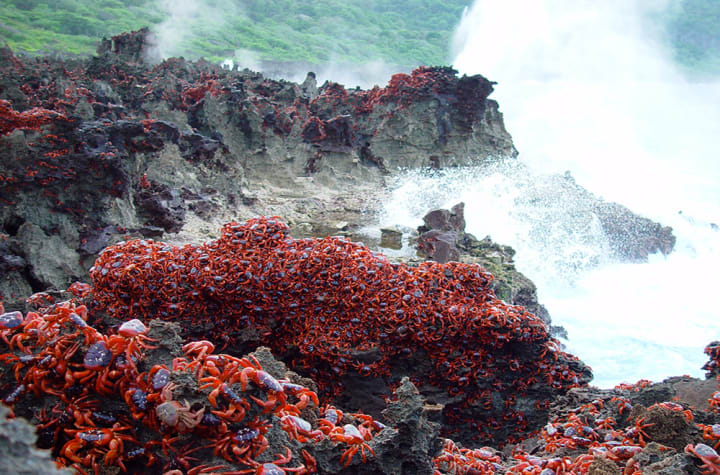
Credit: (Max Orchard)
If you choose to scout out Indonesia while looking for "crown shyness," consider traveling to Christmas Island, located below East Java in the Indian Ocean. Christmas Island is an external Australian territory and while you're there, look out for the Red Crab migration. The Red Crab is one of the most easily noticeable of the 14 crab species on Christmas Island. There are approximately 40-50 million of these Red Crabs scattered across the island's shady locations.
Red Crabs often live in the moisture rich areas such as a rainforest, but also find refuge in the coastal shores surrounding the island and even backyard gardens. Red Crabs create protected, solitary burrows to live in and feed off of fallen leaves, fruits, flowers, seedlings, dead crabs or birds, and the Giant African snail.
The Red Crab migration happens during the wet season (typically October/November) where adult Red Crabs migrate from the forest interior into the coast to breed and release eggs. The migration breeding is connected to lunar phases as well, particularly during the last quarter of the moon phases, as there is the least amount difference between high and low tides. The migration can last upmost of 18 days, peaking at early mornings or late afternoon when the shade is plentiful. A female Red Crab can lay up to 100 000 eggs. Roads across the island, including those in special nature reserves, are closed during the time of migration to prevent interference with the natural process.
If you wish to witness the Red Crab migration yourself, Christmas Island provides tourism accommodations and advice to help plan out your trip.
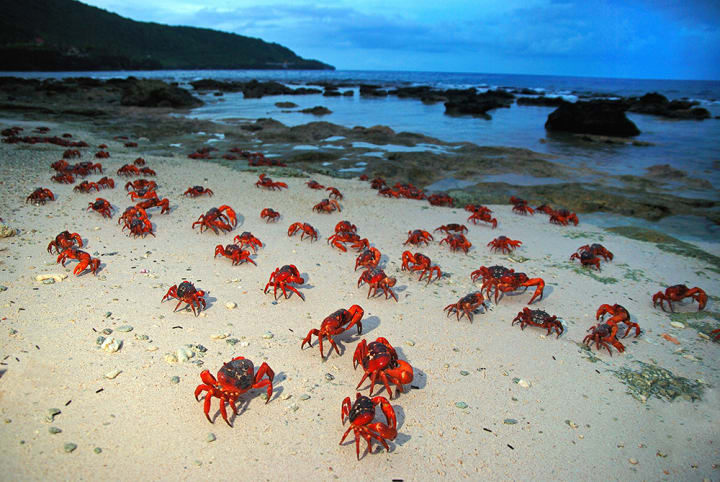
Credit: (Justin Gilligan)
The Northern Lights, Aurora Borealis

Credit: (Shawn Malone)
If you want to watch a unique light show complimented by colder temperatures, perhaps travel to Alaska or northern Canada to see the aurora borealis. Finland, Norway, and Sweden also provide valuable vantage points. The lights occur all year, but are most commonly seen during the winter season due to low pollution and a clearer sky. Months specific to seeing an aurora borealis are September, October, March, and April. The creation of aurora borealis is in regards to the sun and solar activity. If you choose to see lights in the southern hemisphere, it is known as aurora australis.
On the sun, there are these dark patches called "sunspots." When the sun's magnetic fields collide and become knotted together, huge explosions are created, which result in sunspots. Sunspots appear in pairs and may be larger than the Earth's diametre. As the surface of the sun falls and rises, particles escape through sunspots and generate what is known as "solar wind." Within 40 hours, the solar winds hit Earth and create the large displays of northern lights.
These passing particles are drawn into the north and south poles because of magnetic properties of those locations. As the particles pass through Earth's magnetic field, collisions with atoms and molecules of oxygen, nitrogen, and other elements result in the brilliant light displays. Particle collisions with oxygen produce yellow and green, while particle collisions with nitrogen produce red, violet, and occasionally blue. Altitude also affects the colour of the aurora borealis. Green lights occur at altitudes up to 241 km (150 miles) high and red at above 241 km high. Blue appears up to 96.5 km (60 miles) high, while purple and violet appear above 96.5 km high. These lights might take form as static bands of light or as shifting waves of alternating colour if the solar winds are strong enough.
These lights occur about every 11 years as solar cycles peak and plateau. Record-keeping of solar cycles began in 1749 and there has since been a record 22 completed cycles. The last solar cycle peak was in 2013.
If you wish to witness the northern lights yourself, keep up to date with solar activity and plan your trip accordingly. Aurora borealis may reappear in 2024 to 2026.
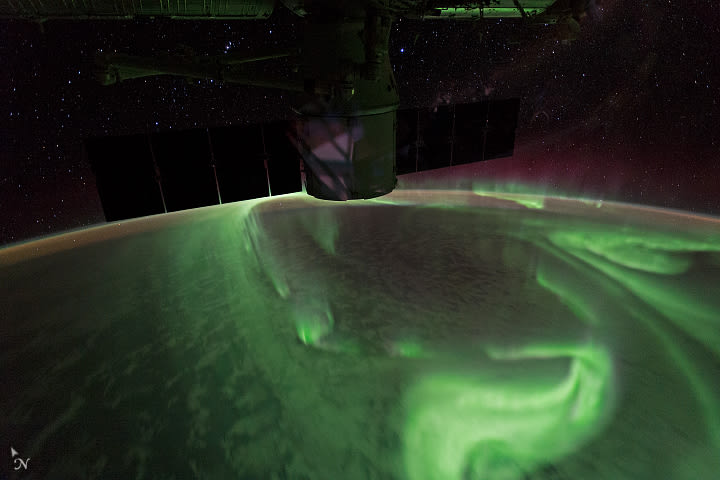
Credit: (NASA)
Although finding the peak times to visit all these locations, as well as being lucky enough to witness these event while traveling may seem daunting, there remains a curiosity to see these phenomena in person. If seeing one of these natural phenomena intrigues you, be sure to take initiative in seeing them as soon as you can.
About the Creator
Stefano Ruccia
Journalism student at University of Toronto / Centennial College
Expanding my reach. If you want to reach me, you can contact me through my email or Twitter!
Twitter: @RucciaStefano






Comments
There are no comments for this story
Be the first to respond and start the conversation.